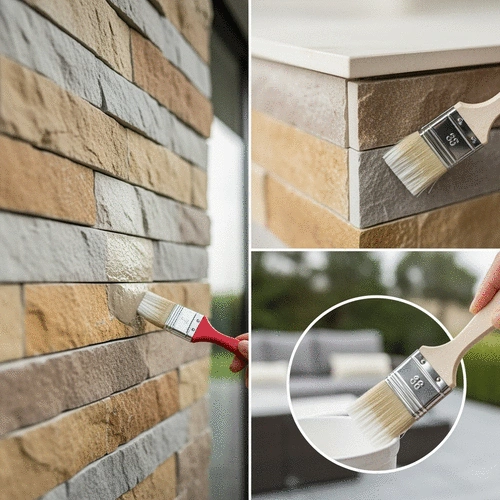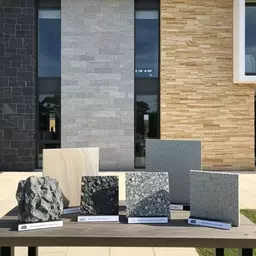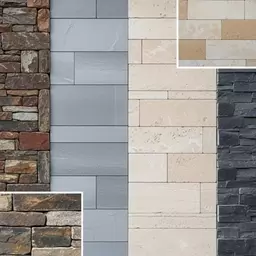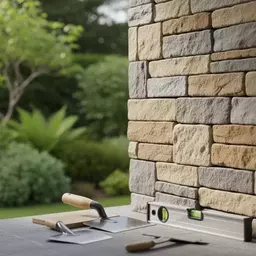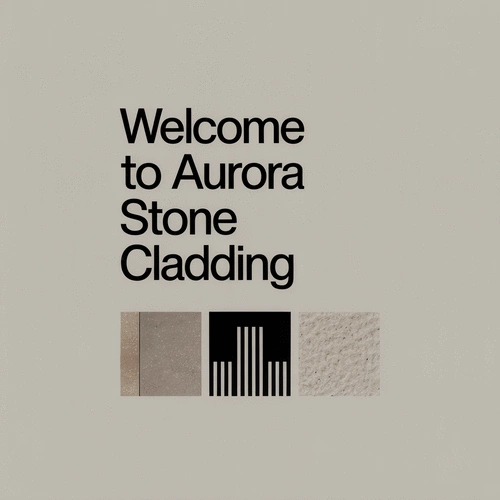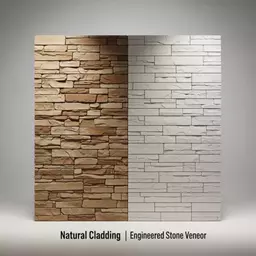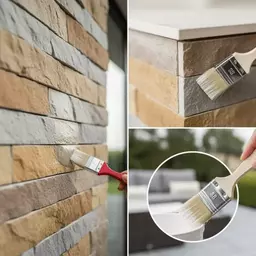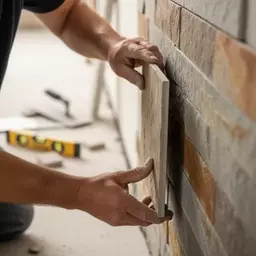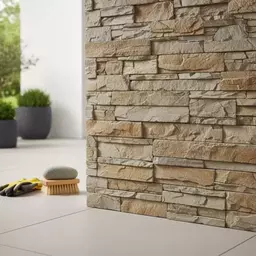In today's rapidly changing climate, the longevity of your home’s aesthetic appeal is often at stake. How do you ensure that the beauty of stone cladding withstands the test of time? This article uncovers the essential strategies for protecting your investment against weather damage.
What You Will Learn
- Recognize the risks of weather damage, including cracking, discoloration, and moisture infiltration.
- Understand the environmental factors like humidity and temperature fluctuations that can impact your stone cladding's performance.
- Implement regular maintenance practices to enhance the durability and aesthetic appeal of your stone surfaces.
- Choose high-quality, weather-resistant materials that suit your local climate for optimal protection.
- Explore effective moisture management systems to prevent internal damage from water infiltration.
Key Strategies for Protecting Stone Cladding
This visual summarizes the essential steps for maintaining the beauty and durability of your stone cladding against weather damage, covering preventative measures, material choices, and maintenance approaches. For more on ensuring a proper foundation for your stone, consider exploring stone cladding installation made simple.
Prevention & Maintenance
- ✓ Regular Inspection & Cleaning: Prevents moisture/debris buildup.
- ✓ Proper Installation: Ensures structural integrity.
- ✓ Sealants & Coatings: Protects against UV, rain, and temperature.
Material Choice Considerations
Choosing high-quality, weather-resistant materials aligned with local climate is crucial.
- Timeless beauty
- Durable
- May require more maintenance
- Consistent patterns
- Often easier to care for
- Less porous
Maintenance Approach
Decide between DIY and professional services based on complexity and budget.
- Lower costs
- Immediate hands-on
- Risk of improper execution
- Expertise, tailored solutions
- High-quality materials
- Higher cost
Long-Term Longevity & Sustainability
- ✓ Climate-Specific Strategies: Tailor protection to local weather.
- ✓ Eco-Friendly Options: Responsibly sourced stones, green sealants.
- ✓ Local Regulations: Ensure compliance with building codes.
Understanding the Importance of Protecting Stone Cladding from Weather Damage
As homeowners and builders, we often think about the beauty of stone cladding, but it's equally important to recognize its vulnerability to weather damage. This is particularly true in Australia, where diverse climates can take a toll on our stone surfaces. Have you ever noticed how the elements can fade colors, crack surfaces, or even promote unwanted growth? Understanding these risks is the first step in ensuring that your investment in stone cladding truly lasts.
Weather damage can manifest in several ways, including cracking, discoloration, and moisture infiltration. These issues not only affect the aesthetic appeal but can also compromise the structural integrity of your building. By addressing these concerns early on, you can save yourself from costly repairs in the future. Let's dive deeper into why protecting your stone cladding is essential.
Why Weather Damage is a Concern for Your Stone Cladding
Weather damage is a significant concern for stone cladding, given the exposure to harsh elements such as rain, snow, and extreme temperatures. Each of these factors can lead to wear and tear, impacting not just the appearance but also the longevity of your cladding. It's essential to consider the specific climate conditions in your area when selecting the right stone and protective measures. For tips on how to keep your natural stone looking its best, refer to our guide on natural stone cladding care tips.
- Heavy rainfall can lead to water infiltration, causing internal damage.
- Extreme heat may cause stones to expand and crack.
- Frost can freeze moisture within the stone, further exacerbating cracks and damage.
Understanding these risks allows for proactive measures. Whether it’s through careful selection of materials or implementing protective systems, there are ways to fortify your stone cladding against weather challenges.
The Benefits of Proper Maintenance and Protection
Proper maintenance and protection of your stone cladding can make a world of difference! Regular care not only enhances the beauty but also extends the lifespan of your investment. Here’s why it's worth the effort:
- Improved Durability: Well-maintained stone can resist weather damage better.
- Cost Savings: Preventative measures can save you from expensive repairs.
- Aesthetic Appeal: Regular care keeps your stone looking fresh and vibrant.

At Aurora Stone Cladding, we believe in empowering our clients with the knowledge and practices needed to preserve their stone features. It’s like giving your cladding a protective shield against the elements!
Environmental Factors Affecting Your Stone Cladding
Several environmental factors can impact the performance of your stone cladding. These include local weather patterns, humidity levels, and even vegetation nearby. For instance, if your home is surrounded by trees, you might deal with organic debris that can trap moisture against the stone.
- Humidity levels can promote moss and algae growth.
- Wind can carry sand and dust, leading to abrasion and wear.
- Temperature fluctuations can cause expansion and contraction, leading to cracking.
By understanding these environmental concerns, you can take proactive steps to mitigate their effects. Identifying the unique challenges posed by your surroundings allows you to tailor your stone cladding maintenance strategy effectively.
We Want to Hear From You!
What specific challenges have you faced in protecting your stone cladding from weather damage? Share your experiences or ask questions below:
Summarizing Your Action Plan for Stone Cladding Protection
As we wrap up our discussion on protecting your stone cladding, it's essential to consolidate the key strategies that will ensure its resilience against weather damage. By following a structured action plan, you can effectively maintain the beauty and durability of your stone surfaces. Let’s summarize the vital steps you can take to keep your stone cladding in top shape!
Key Takeaways for Effective Weather Damage Prevention
- Regularly inspect and clean your stone cladding to prevent build-up of moisture and debris.
- Choose high-quality, weather-resistant materials that align with your local climate.
- Implement proper installation techniques to ensure structural integrity.
- Utilize effective moisture management systems, such as weep screeds and drainage solutions.
- Apply appropriate sealants and coatings to protect against rain, UV rays, and temperature fluctuations.

By integrating these practices into your maintenance routine, you can significantly enhance the lifespan of your stone cladding. Remember, prevention is always better than cure! Taking proactive measures will save you time and resources down the line.
Investing in Professional Services vs. DIY Solutions
When it comes to maintaining your stone cladding, you might wonder whether to tackle the tasks yourself or to engage professional services. While DIY solutions can be cost-effective, they may lack the expertise needed for intricate issues, especially when it comes to proper installation and moisture management.
Here are some advantages and considerations for both options:
- Professional Services: Expertise in identifying underlying problems, tailored solutions for your specific stone type, and access to high-quality materials.
- DIY Solutions: Lower costs and immediate hands-on experience, but risk of improper execution and potential long-term damage.
Ultimately, your choice may depend on your budget, the scope of work needed, and your comfort level with home improvement projects. I always suggest weighing both options carefully, especially when it involves protecting your investment in stone cladding!
Encouraging Long-Term Longevity for Your Stone Cladding
Understanding Material Durability: Natural vs. Engineered Stone
As we embrace the longevity of your stone cladding, it’s crucial to understand the differences between natural and engineered stone. Natural stone, such as granite and limestone, offers timeless beauty and durability, while engineered stone provides more consistent patterns and colors, often at a lower cost.
Both options have their advantages, and your choice should align with your aesthetic preferences and functional needs. For example, natural stone is typically more durable but may require more maintenance, whereas engineered stone is less porous and can be easier to care for. For a deeper dive into material choices, explore the differences between natural vs engineered stone cladding.
Emphasizing the Importance of Climate-Specific Strategies
Each climate presents unique challenges to stone cladding. In humid areas, for instance, moisture management becomes a top priority to prevent mold and efflorescence. Meanwhile, in dryer regions, protecting against UV damage is essential to maintain color vibrancy. Understanding your local climate allows you to tailor your stone cladding protection strategy effectively.
Exploring Cost-effective Solutions for Maintenance
Finding cost-effective solutions for maintaining your stone cladding doesn't have to be daunting! Here are a few strategies that can help:
- Regular DIY inspections to catch small issues before they escalate.
- Use multi-purpose cleaning solutions that are effective yet gentle on stone.
- Prioritize preventive measures, such as sealant application, to extend maintenance intervals.
By employing these savvy maintenance tips, you can enjoy the stunning aesthetics of your stone cladding while also ensuring its longevity without breaking the bank!
Next Steps: Protecting Your Investment in Stone Cladding
Consulting Professionals for Tailored Solutions
If you're uncertain about your stone cladding’s needs or facing specific issues, don't hesitate to reach out to professionals. At Aurora Stone Cladding, we pride ourselves on providing tailored advice and solutions that speak directly to your unique requirements. With my background in stone cladding and sustainable practices, I’m here to help guide you through the process!
Exploring Eco-Friendly and Sustainable Options for Your Cladding
As we move towards a more sustainable future, exploring eco-friendly options for your stone cladding is vital. This includes choosing stones sourced responsibly and utilizing environmentally friendly sealants. Investing in sustainability not only benefits your home but also contributes positively to the environment.
Understanding Local Regulations and Building Codes
Finally, it’s essential to consult local regulations and building codes when planning your stone cladding project. These codes can dictate specific requirements for installation and maintenance, ensuring that your cladding meets safety and aesthetic standards. Keeping informed about these guidelines will help you avoid potential pitfalls and enhance the value of your investment!
Frequently Asked Questions About Stone Cladding Protection
- Q: What are the main types of weather damage that affect stone cladding?
- A: The main types of weather damage include cracking, discoloration, and moisture infiltration caused by factors like heavy rainfall, extreme temperatures, frost, humidity, and UV exposure.
- Q: How often should I inspect my stone cladding for damage?
- A: Regular inspections are crucial. It's recommended to visually inspect your stone cladding at least once a year, or more frequently if your area experiences extreme weather conditions.
- Q: Is natural stone or engineered stone more resistant to weather damage?
- A: Both natural and engineered stone have advantages. Natural stone is durable but may require more maintenance, while engineered stone is often less porous and can be easier to care for. The best choice depends on your specific climate and maintenance commitment.
- Q: What are some cost-effective ways to maintain stone cladding?
- A: Cost-effective maintenance includes regular DIY inspections to catch small issues early, using multi-purpose cleaning solutions, and prioritizing preventive measures like sealant application to extend maintenance intervals.
- Q: When should I consider hiring professionals for stone cladding maintenance?
- A: You should consider hiring professionals for intricate issues, proper installation, moisture management, or if you are uncertain about the specific needs of your stone cladding. Professionals offer expertise, tailored solutions, and access to high-quality materials.
Recap of Key Points
Here is a quick recap of the important points discussed in the article:
- Stone cladding is vulnerable to weather damage, including cracking and discoloration.
- Regular maintenance and proactive measures can significantly extend the lifespan of your stone cladding.
- Choose high-quality, weather-resistant materials that are suitable for your local climate.
- Implement effective moisture management systems to prevent water infiltration and damage.
- Consider professional services for intricate maintenance tasks to ensure optimal results.

